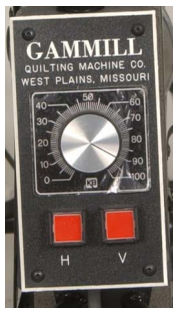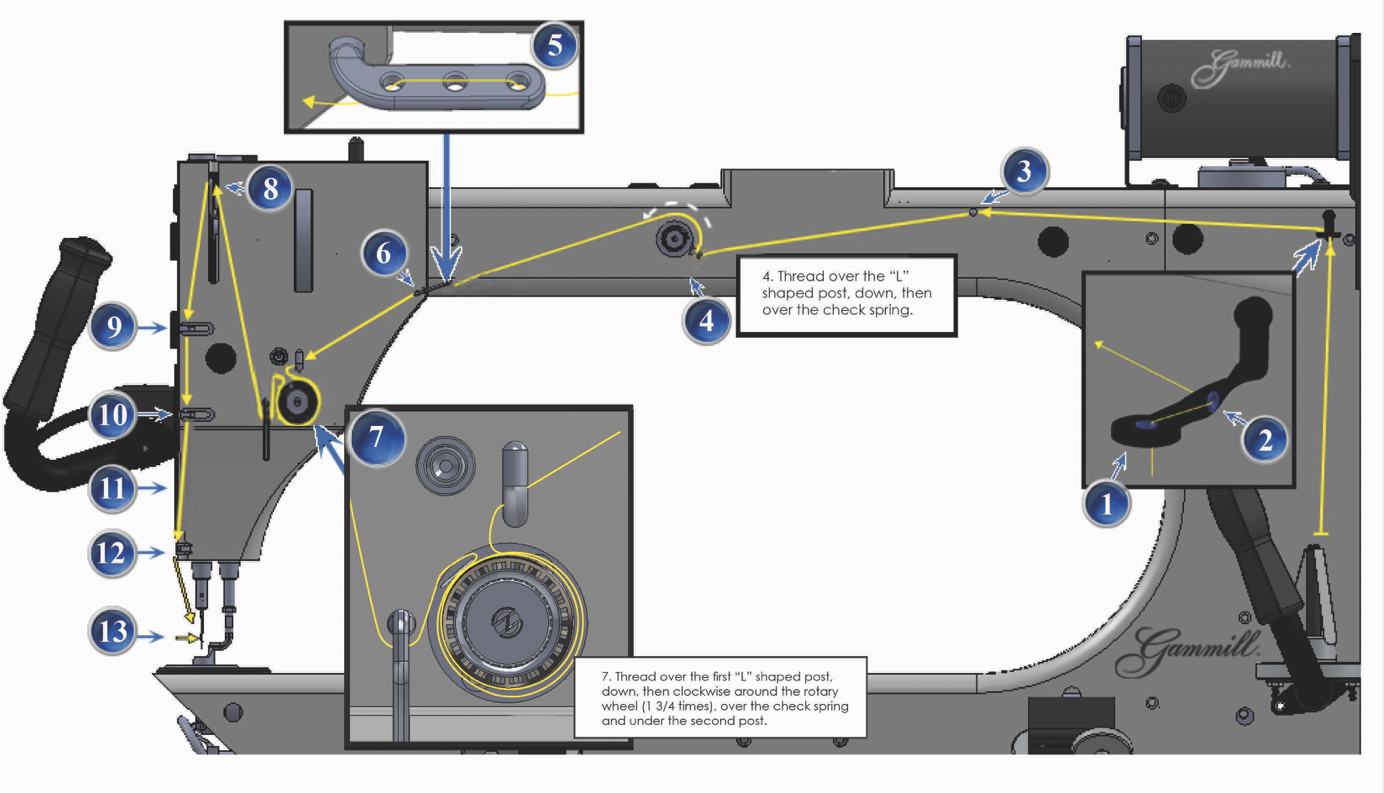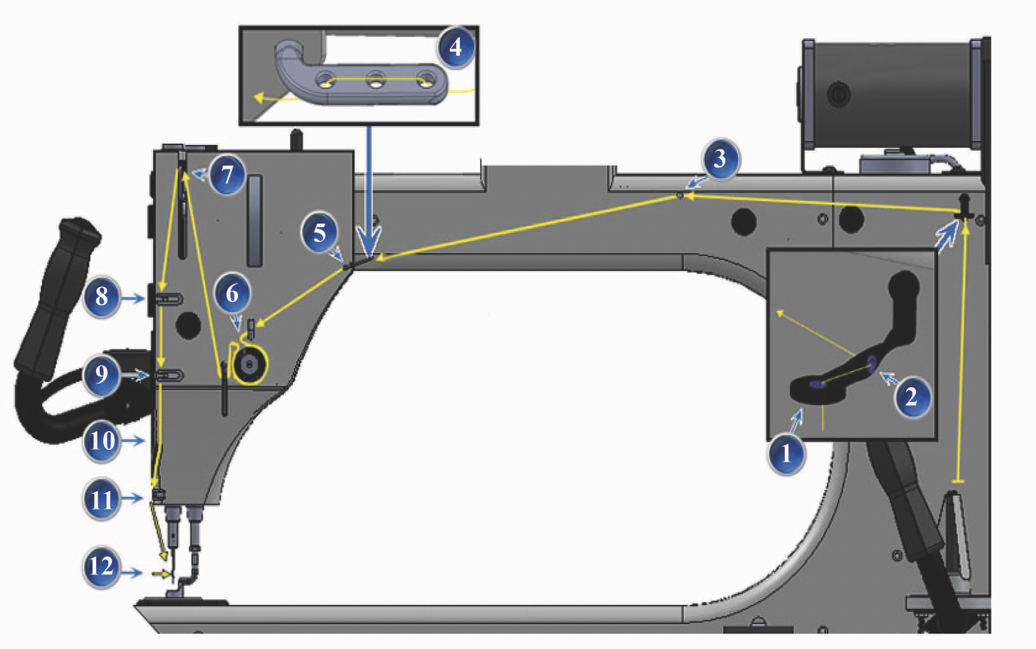Minus Machine
The minus is a former Gammill machine model without stitch regulation.
Click here for the Minus Machine Manual
Quilting machines without Plus Stitch Regulation have the control panel shown below:

The dial can be turned from 0 to 100% of the motor speed. The speed can be changed as you stitch if needed. The red square buttons marked H and V are for the horizontal and vertical channel locks respectively.
Speed Control
When you are first learning to use your machine, run the motor at a medium needle speed until you become accustomed to the feel of moving the machine. Moving the machine too fast with a slow needle speed causes greater needle deflection. Moving the machine too slow with a fast needle speed causes the stitches to be quite small.
Your goal is to achieve 8 to 12 stitches per inch.
Starting and Stopping
Start the machine moving at the same instant that the needle switch is turned on, and stop the machine the same instant the switch is turned off. This will avoid too many small stitches concentrated in one area when the machine is turned on, and too much needle deflection when the switch is turned off.
When you are quilting patterns with points, do not let the machine rest at the point. Since the needle is working at a constant speed, the machine must make a quick directional change, moving out of the point quickly in order to avoid too many small stitches and possibly broken threads at the point.
Free Motion
Free motion quilting is quilting without a pattern. Many teachers have videos, books and classes on the hundreds of different designs and techniques for free motion quilting. Your dealer carries many of these learning tools.
For free motion quilting with the motor set at a constant speed you will need to first set the speed that is comfortable for you. If you are having trouble with stitch quality such as “eyelashes” or pulled threads, either slow down the movement of the machine or turn up the motor speed. We tend to speed up around tight curves such as loops and along straight lines. Resist the temptation to speed up at these places and try to keep the movement smooth and even.
Strive to keep the motion smooth and even for nice even stitch length. If you are having trouble with a particular design it often helps to speed up the motor and speed up the movement of the machine.
Faster is sometimes better.
Threading: Minus Machine with no Thread Break Sensor

Threading: 26 or 30 with the IT Assembly Mounted on Top


Threading: Gammill Premier Head- Minus with no IT Assembly

